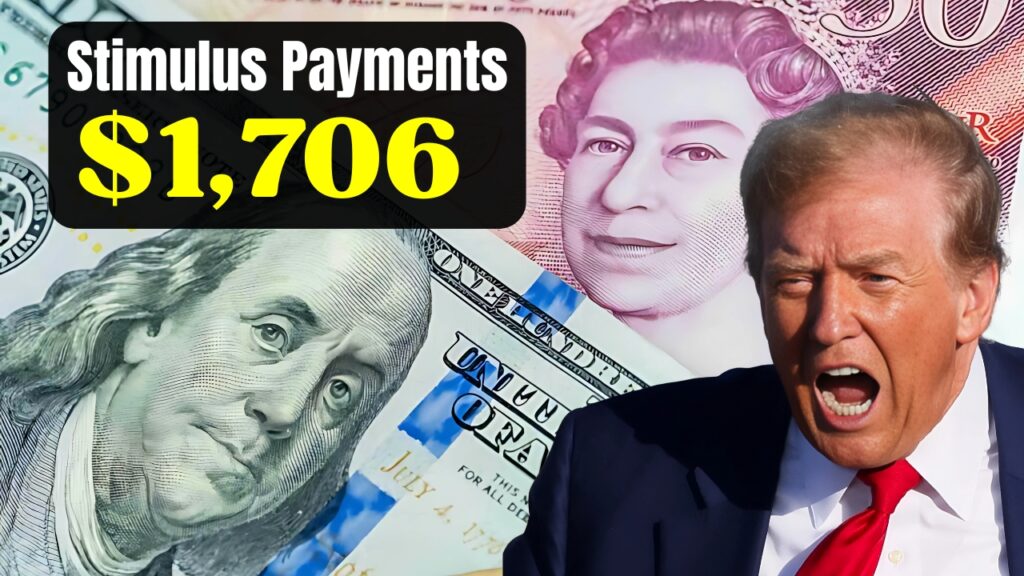
While federal $1,706 stimulus payments from the pandemic era have officially ended, the IRS is automatically sending payments to 1 million taxpayers who missed claiming their 2021 Recovery Rebate Credit, and several states continue offering their own relief programs. If you’re wondering whether you qualify for financial assistance in 2025, this comprehensive guide covers everything you need to know about available stimulus payments and relief programs.
Understanding the IRS Automatic Payments in 2025
The IRS announced special automatic payments going to eligible taxpayers who filed a 2021 tax return but left the Recovery Rebate Credit field blank or entered $0 when they were actually eligible. These payments, totaling $2.4 billion, represent the final wave of pandemic-era stimulus payments.
Who Qualifies for Automatic IRS Payments
You may receive an automatic payment if you:
- Filed a 2021 tax return
- Left the Recovery Rebate Credit field blank or entered $0
- Were actually eligible for the $1,400 third stimulus payment
- Have a valid Social Security Number
- Meet the income requirements from 2021
These payments will be automatically direct deposited or sent by paper check based on your 2023 filing information, with most arriving by late January 2025.
Income Limits for IRS Payments
The 2021 eligibility requirements still apply:
- Single filers: Up to $75,000 adjusted gross income
- Married filing jointly: Up to $150,000 adjusted gross income
- Head of household: Up to $112,500 adjusted gross income
State-Level Stimulus Programs Still Active
Multiple states are providing their own stimulus payments and relief programs throughout 2025, funded by budget surpluses and inflation relief initiatives.
New York Inflation Relief Checks
New York will begin issuing one-time “inflation refund” checks in October to over 8 million households. The payment amounts are:
- $200 for single filers earning up to $75,000
- $150 for single filers earning $75,000 to $150,000
- $400 for joint filers earning up to $150,000
- $300 for couples earning up to $300,000
California Golden State Stimulus
California’s “Middle Class Refund 2.0” delivers payments between $400 and $1,050 to residents who filed 2023 tax returns and meet income limits. Additionally, the Sacramento Family First program provides $725 monthly payments to 200 low-income families until November 2025.
Colorado Property Tax Rebate
Colorado residents who are 65 years or older or disabled may receive rebates up to $1,154 if they’re single filers earning $18,704 or less, or $25,261 or less for married couples filing jointly.
How to Claim Missed Stimulus Payments
If you believe you’re entitled to stimulus payments you never received, here’s what you need to do:
For 2021 Recovery Rebate Credit
You must file your 2021 tax return by April 15, 2025, to claim any missed payments, even if you had little or no income that year. The process involves:
- File your 2021 tax return (even if late)
- Complete Line 30 of Form 1040 for the Recovery Rebate Credit
- Submit via IRS Free File, tax preparer, or paper mail
- Wait for processing – the IRS will issue the payment automatically
Check Your Payment History
You can create a login for your IRS online account to check the status of your economic impact payments in the “tax records” section. This helps you determine exactly how much you received and whether you’re missing any payments.
State Relief Program Comparison Table
| State Program | Payment Amount | Eligibility Requirements |
|---|---|---|
| New York Inflation Relief | $150-$400 | Income up to $300,000 (joint filers), filed 2023 return |
| California Middle Class Refund | $400-$1,050 | Filed 2023 tax return, meet income limits |
| Colorado Property Tax Rebate | Up to $1,154 | Age 65+ or disabled, income under $25,261 |
| Arizona Cost of Living Fund | Up to $750 | Low-income households, application by May 31 |
| Texas Utility Bill Stimulus | $150 | Low-income seniors, direct deposit |
| California Sacramento Family First | $725 monthly | 200 low-income families, through November 2025 |
Important Deadlines and Action Steps
Federal Deadlines
The most critical deadline is April 15, 2025 – this is your last chance to file a 2021 tax return and claim any missed stimulus payments. Even if your income was minimal or non-existent, you must file a return to claim the Recovery Rebate Credit.
State Program Deadlines
Different states have varying deadlines:
- Arizona: Application deadline May 31, 2025
- California: Ongoing through 2025 for eligible residents
- New York: Automatic payments starting October 2025
Avoiding Scams and Staying Safe
Be cautious of phishing emails and scams – the IRS will never ask for personal information via email or phone. Legitimate stimulus payments come through official channels, and you should only provide personal information on official government websites.
Red Flags to Watch For
- Requests for personal information via email or phone
- Demands for upfront fees to receive payments
- Promises of guaranteed payments without eligibility verification
- Unofficial websites asking for Social Security numbers
How Payments Affect Other Benefits
Any Recovery Rebate Credit received does not count as income when determining eligibility for federal benefits such as Supplemental Security Income (SSI), SNAP, or TANF. This means receiving stimulus payments won’t affect your other government assistance.
Frequently Asked Questions
Q: Will there be new federal stimulus checks in 2025?
A: There is no new nationwide federal stimulus program as of 2025, but the IRS is sending automatic payments to eligible taxpayers who missed claiming previous credits.
Q: How do I know if I’m getting an automatic IRS payment?
A: Eligible taxpayers will receive a separate letter notifying them of the payment, which will be automatically direct deposited or sent by paper check.
Q: Can I still get state stimulus if I received federal payments?
A: Yes, state stimulus payments are separate from federal programs and have their own eligibility requirements based on state residency and income.
New Rules Make It Tougher for Seniors to Handle Social Security Tasks by Phone